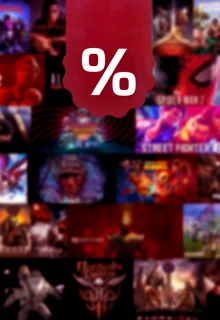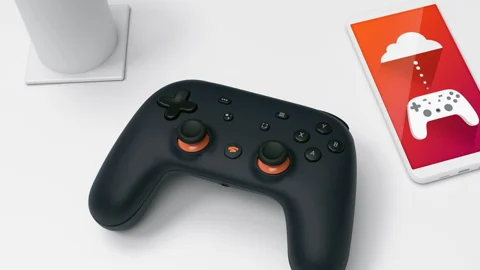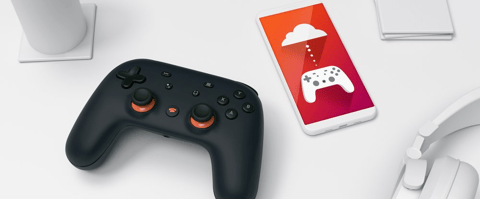
Unless you've been living under a rock for the past year or so, you've probably heard about Google's cloud gaming service Stadia, which had its official launch on November 19. Now that it's out, we take a closer look at the service to let you know if it's worth the $9.99 monthly fee and the $129 initial investment.
What is Google Stadia?
Before we get to Stadia, what is a cloud gaming service, anyway? As Google puts it on its own store, it's "games, without a console or downloads". For a flat monthly subscription fee, Stadiaallows you to play games from a growing library of titles on your TV, laptop, desktop or mobile device. The trick here is that you still have to buy the games, so don’t call it “Netflix for games”, not yet.
In theory, with the service, you don't need to worry about how powerful your machine is, because the games are actually run on Google's servers and streamed to your device, which just acts as a screen.
To enjoy Stadia, you need a fast and reliable internet connection, Google's Chromecast Ultra streaming gadget (which you get when you subscribe) plugged into your TV, or a Pixel phone, or just a Chrome browser on your laptop or desktop PC/Mac.
Not So Seamless
The service promises seamless play and switch across your screens, with the games streamed at "gorgeous" 4K resolution at 60 FPS and with HDR and surround sound. Does it deliver? Well, kinda. Stadia really does work and delivers better image quality than previous attempts at cloud gaming, while the switch between devices is indeed no hassle. But the service still feels like a beta and the promised 4K does not feel great and sometimes runs at half the FPS you are told to expect.
Testers have reported that even on the Chromecast Ultra, where Stadia should shine in its full 4K glory, games are just upscaled from 1080p renders. Using the service through the Chrome web browser lacks the needed fidelity and has the strongest “work in progress” feel to it.

A Starting Lineup of 22
Stadialaunches with 22 games, a list that some might find too short, but definitely an improvement from what Googleinitially announced for the service. Here’s the full list of titles you can play on Google Stadia:
- Assassin’s Creed Odyssey
- Attack on Titan: Final Battle 2
- Destiny 2: The Collection
- Farming Simulator 2019
- Final Fantasy XV
- Football Manager 2020
- Grid 2019
- Gylt
- Just Dance 2020
- Kine
- Metro Exodus
- Mortal Kombat 11
- NBA 2K20
- Rage 2
- Rise of the Tomb Raider
- Red Dead Redemption 2
- Samurai Shodown
- Shadow of the Tomb Raider
- Thumper
- Tomb Raider 2013
- Trials Rising
- Wolfenstein: Youngblood
Destiny 2: The Collection and Samurai Shodown are available to play for free as part of the subscription, while the rest of the games need to be purchased separately.
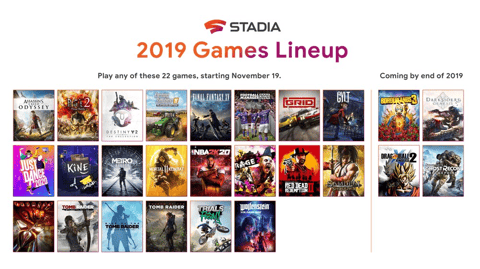
Googlepromises to add more titles soon enough, with Borderlands 3, Tom Clancy’s Ghost Recon: Breakpoint, Dragon Ball: Xenoverse 2 and Darksiders Genesis arriving within the first six weeks after launch. Doom: Eternal, WatchDogs: Legion, Gods & Monsters and Cyberpunk 2077 are mentioned as some of the titles slated for a 2020 release on the platform.
The Cost
Stadia is currently sold in what Googlecalls its Premiere Edition, which gets you Chromecast Ultra and the platform’s own Stadia Controller, and three months’ worth of subscription to the streaming service for $129. After the free period, it’s $9.99 a month.
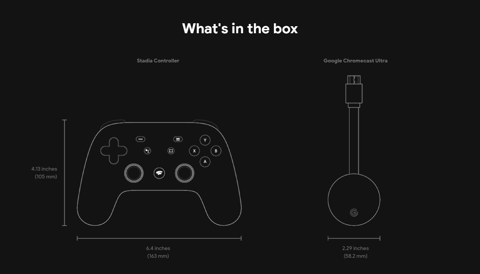
The Verdict
Google’s Stadiafeels like a beta version of its promised glory but is definitely a step in the right direction for cloud gaming. Should you jump into the new service, though? I would not rush it but rather wait until its teething problems are over (or prove unresolvable).
If you don’t own a powerful gaming PC or console and have no plans on buying one, that’s your best chance to experience great titles across many devices. Be sure to have a very good internet connection or prepare for an utter disappointment. Understand that the product feels far from finished and think if you are comfortable with that. Note that you still have to buy the games, except for Destiny 2: The Collection which comes with the subscription.
All in all, if you decide to make the jump, lower your expectations on the pristine 4K quality and you might be happy with the 1080p upscale you’ll get.














